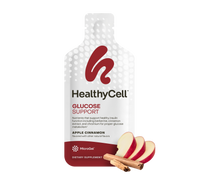At a Glance
- In addition to other nutrition label changes, the FDA guidelines for vitamins and minerals has been updated for the first time in 30 years
- The %DV has decreased for 12 essential micronutrients: vitamin A, natural vitamin E, zinc, copper, chromium, selenium, and B vitamins
- The %DV has increased for 5 essential micronutrients: potassium, calcium, vitamin D, vitamin K, and vitamin C
- Food and dietary supplement companies will have to reformulate their products, change their packaging, or both to meet the new FDA guidelines and have until January 2020 to make the changes, depending on the size of the company
- Consumers will have to be proactive and scrutinize nutrition labels to evaluate if products are up to date with the new nutritional standards
- Brands that have already adjusted their products to meet the latest FDA vitamins recommendations and requirements allow consumers to make easier informed choices regarding their nutrition
For the first time in 30 years, the Food and Drug Administration (FDA) published new guidelines for the Recommended Daily Intake (RDI) and Daily Values (DV) for most vitamins and minerals. These changes, in addition to other updates being made to our food nutrition labels, forced manufacturers to make some serious changes to their products. In order to meet the mandatory deadline of January 1st, 2020 for these new labeling guidelines, manufacturers had to change their formulas or update their packaging in order to comply. While this label overhaul may be a headache for food, beverage, and supplement companies, it’s long overdue and in the best interest of consumers. Imagine if we still subscribed to low fat and high carb eating pattern that was once a popular dieting trend of the 80’s and 90’s.[1] Most likely, many of us would be suffering from some serious sugar-related consequences had we continued to consume those chemical-laden, fat-free foods.
What are these updates and how will they affect the nutritional content and nutrient density of our foods and supplements? Is there a surefire way to ensure your products are meeting these new requirements? With so many questions swirling around these FDA updates, we thought we’d take the opportunity to break down these revisions to better understand the new recommendations. *We also included a handy image of the FDA Daily Value Changes at the end of this article with all of the nutrients listed in the order they appear on the supplement fact panel (the Increase/Decrease %, Previous Daily Value and the New Daily Value.)
Unit Updates
To understand the latest FDA updates to the units used on nutrition labels, it’s best to first understand what’s already printed on our product’s packaging.[2] If you look at the nutrition label of a food or supplement, you’ll notice the Percent Daily Values (%DVs), which notes the percent of the nutrient provided by a single serving of the product in relation to the daily requirement. This allows consumers to judge the nutrient density of the item and adjust their daily intake accordingly. It’s important to also note that the percent daily values for various nutrients might have an upper or a lower limit, meaning that an individual should aim to consume less than the upper limit and at minimum, meet the lower limit value.[3] Up until the latest FDA update, these daily values have been measured using International Units (IU’s) for vitamins A, D, E, niacin, and folate. With the latest labeling changes, these micronutrients will now be measured with new units.
Vitamin A FDA Updates
This micronutrient is now measured in Retinol Activity Equivalents (RAE’s) with the following conversion factors for the various forms of vitamin A:
- 1 mcg of RAE equivalents:
- 1 mcg retinol
- 2 mcg supplemental beta carotene
- 12 mcg naturally occurring beta carotene
- 24 mcg alpha carotene
- 24 mcg beta cryptoxanthin
Niacin FDA Updates
- 1 mg NE equivalents:
- 1 mg niacin
- 60 mg tryptophan
Vitamin E FDA Updates
- 1 mg alpha-tocopherol equivalents:
- 1 mg RRR alpha-tocopherol (natural)
- 2 mg all-racemic alpha-tocopherol (synthetic)
Folate and Folic Acid FDA Updates
- 1 mcg DFE is equivalent to 1 mcg naturally occurring folate
- 1.7 mcg DFE is equivalent to 1 mcg synthetic folic acid
Vitamin D FDA Updates
Along with the unit updates, the FDA has adjusted the recommended daily values for many vitamins and minerals. These simultaneous changes present a challenge for consumers, who will now have to convert the outdated units to the new measurements before evaluating if their food or supplement meets the latest standards. This tedious process could be a regular hassle for consumers who are trying to keep up to date with the new dietary guidelines.
Vitamin and Mineral Intake Increases
The notable increases in FDA recommended daily values include potassium, calcium, vitamin D, vitamin K, and vitamin C, which all saw bumps in their recommended intake levels following FDA research on the micronutrients role in various public health issues.
Potassium Daily Value Updates
- Previous DV: 3500 mg
- New DV: 4700 mg
The FDA has both increased the daily value for potassium and changed its status from a voluntary label to mandatory for all food and supplement packaging. These changes could be attributed, in part, to a rise in sodium consumption based on current diet trends. A diet that is excessively high in sodium but low in potassium can lead to an increased risk for developing cardiovascular disease and high blood pressure.
Vitamin C Daily Value Updates
- Previous DV: 60 mg
- New DV: 90 mg
The FDA has stated that 28 percent of the current population is currently consuming less than the recommended daily intake for vitamin C from either food or supplements. However, while most diets are low in the nutrient, the majority of the population is not deficient. With this in mind, the FDA has changed the status of vitamin C labeling on product packaging to voluntary rather than mandatory.
Calcium Daily Value Updates
- Previous DV: 1000 mg
- New DV: 1300 mg
With 37 percent of the population not currently reaching adequate levels of calcium with their intake, the FDA has adjusted the daily value accordingly. Because the nutrient plays an important role in bone health and preventing serious bone-related conditions like osteoporosis, the FDA’s recommendation for an increase in calcium indicates that these conditions are a major health concern for the general public. But beware, too much calcium can lead to arterial calcification if your body does not store it in the bones, but rather stores it in your blood vessels. The fortification of calcium in many foods may lead to too much calcium being ingested, so mind your diet. Vitamin K2 can help your body direct calcium out of the blood and into the bones.
Vitamin D Daily Value Updates
- Previous DV: 400 IU
- New DV: 20 mcg
Like calcium, vitamin D plays an important role in bone health and development. For this reason, the FDA has recognized vitamin D deficiency as a public health concern and has both increased the suggested daily values for the intake of the nutrient and changed the status from voluntary to mandatory as a required nutrient for product nutrition labels.
Vitamin K Daily Value Updates
- Previous DV: 80 mcg
- New DV: 120 mcg
The daily value established by the FDA for vitamin K is the only nutrient that is established based on an Adequate Intake level versus an Estimated Daily Requirement. The FDA recommendation is based solely on data for vitamin K1, which is found in plant products and does not consider vitamin K2 or K3. While the FDA does not allow for food fortification with K2 or K3 vitamins, supplement products may use these forms of the nutrient.
The suggested increases in these vitamins are important for consumers to consider when choosing products and building a healthy diet. Since these recommended increases are based on 30 years of public health data, any deficiency in these vitamins or minerals could compromise a consumers well-being.
Vitamin and Mineral Intake Decreases
Just as with the vitamin and mineral increases, the FDA lowered the daily values for 14 vitamins and minerals based on current public health data. Some of the most significant drops include the recommended daily values for vitamin A, natural vitamin E, zinc, copper, chromium, selenium, and B vitamins. Of these decreases, the percent reduction in the recommended daily value for the B vitamins was the most significant, with a 40 percent decrease in folic acid, a 50 percent reduction in pantothenic acid, a 60 percent reduction in vitamin B12, and a 90 percent reduction in biotin. While these new reduced micronutrient values have been made based on general trends and statistics, it’s important to note how these changes could potentially impact the nutrient density of our products.
Vitamin A Daily Value Updates
- Previous DV: 5000 IU
- New DV: 900 mcg
In addition to the reduction of the daily value, vitamin A will no longer be required on nutrition labels.[4] The FDA has stated that vitamin A deficiency no longer represents a public health concern. However, some research has linked vitamin A toxicity to certain health complications, including birth defects when over-consumed by pregnant women and an increased risk for developing osteoporosis.
Vitamin E Daily Value Updates
- Previous DV: 30 IU
- New DV: 15 mcg
This fat-soluble vitamin has undergone both a unit change and an update to the FDA recommended daily value, which reflects how the nutrient is used in the body. While there are eight variations of vitamin E, the only form that is used and remains in the blood is alpha-tocopherol, which is the type the current daily value is based on.[5] Using evidence obtained over the last 30 year period, the FDA has ruled that vitamin E deficiency is no longer a public health concern and that the previous daily value, which was 25 percent higher than the current DV, was unnecessary for general health.
Zinc and Copper Daily Value Updates
- Zinc Previous DV: 15 mg
- Zinc New DV: 11 mg
- Copper Previous DV: 2 mg
- Copper New DV: 0.9 mg
Zinc and copper are two minerals that work in balance, with one nutrient opposing the bioavailability of the other. Research has shown that a high zinc intake will prevent the absorption of copper, so a careful balance between the two nutrients is necessary for health and well-being. To ensure this careful equation remains in check, the FDA was required to lower the daily values for both nutrients. Based on the FDA’s findings, a deficiency was not a public health concern for either mineral. However, overconsumption of both zinc and copper, particularly concerning blood, liver, and heart health is dangerous for consumers.[6,7]
Vitamin B Daily Value Updates
- Thiamin (Vitamin B1) - 20% decrease from 1.5 mg to 1.2 mg
- Riboflavin (Vitamin B2) - 23.53% decrease 1.7 mg to 1.3 mg
- Niacin (Vitamin B3) - 20% decrease from 20 mg to 16 mg
- Vitamin B6 - 15% decrease from 2 mg to 1.7 mg
- Vitamin B12 - 60% decrease from 6 mcg to 2.4 mcg
- Biotin - 90% decrease from 300 mcg to 30 mcg
- Pantothenic Acid- 50% decrease 10 mg to 5 mg
- Folic Acid- 40.03% decrease 400 mcg to 400 mcg DFE (1 mcg DFE is equivalent to 1 mcg natural folate or 1.7 mcg synthetic folic acid)
The FDA’s changes to the daily values assigned to the B vitamins were the most significant out of all of the updates.[8] The FDA found that deficiencies in these vitamins were not a public health issue and that the former DV levels were excessively high and essentially unattainable through diet alone. However, several subpopulations are at a greater risk of having low levels of certain B vitamins. For example, plant-based eaters are more likely to experience a vitamin B12 deficiency, since it is found primarily in animal products. Vitamin B6, which is involved in immune system support, is beneficial for those with a suppressed immune response. Folate or folic acid is necessary in higher doses for pregnant women, as the nutrient helps to prevent birth defects. Finally, most of the B vitamins impact energy metabolism, which is useful for active individuals.
Since the new daily values have been established based on the needs of 50 percent or more of the average population consuming a 2,000 to 2,500 calorie diet, these more specific needs were not considered when making the final recommendation.[9]
In addition to the decreased daily values for the above vitamins and minerals, the FDA also reduced the recommended values for both chromium and selenium. Chromium, which was reduced by 70 percent, and selenium, reduced by 21 percent, appeared to be based on two primary factors. Low levels of either mineral were not an apparent public health concern for the general population. However, adequate intake levels of chromium and selenium have been shown to provide substantial health benefits to those with conditions such as diabetes or who have a suppressed immune system.[10,11]. While there is evidence to suggest the protective effects of both of these nutrients, for the general population the formerly high daily value levels were not necessary. Additionally, the FDA’s updated recommendation for these minerals could be indicative of the low levels of both nutrients in natural food sources, meaning the previous daily values would be nearly impossible to reach through diet alone.
Backed by several decades of research and observation examining the health trends, dietary changes, and other societal shifts that impact the general population, the FDA’s decision to lower the above nutrients comes well informed. Some companies had to reformulate their products, adjust their packaging, or both, to meet the new FDA guidelines for these lowered daily values.
Be Aware and Prepare: Updating Your Nutrition with the FDA Updates
The FDA’s update to food labeling and nutrition requirements represents a shift in our eating patterns and a better understanding of our nutritional needs.[12] With changes to the Recommended Daily Intake, the Reference Amount Customarily Consumed (which reflects more accurate serving sizes), the units of measurement, and the Daily Values for many essential vitamins and minerals, consumers will have a lot to consider when choosing their foods and supplements. So what is the best way to ensure you’re nutrition is reflective of these new standards?
Consumers must first be aware of these updates and prepare to spend some extra time scrutinizing nutrition labels.
The MICROGEL™ multivitamin Bioactive Multi by Healthycell has been formulated specifically with the new FDA guidelines in mind to bring consumers a supplement that is as innovative in form as it is in function. Supplement companies like Healthycell that have designed products that adhere to the FDA’s latest nutritional recommendations are proving the value they place on the last 30 years of scientific research that has gone into the FDA nutrient and nutrition label update as well as their customers’ overall wellbeing. So if you’d like to save yourself from having to compare and calculate your supplement’s nutrition based on the FDA changes, your best bet is to go with a product like the Bioactive Mutli by Healthycell.




